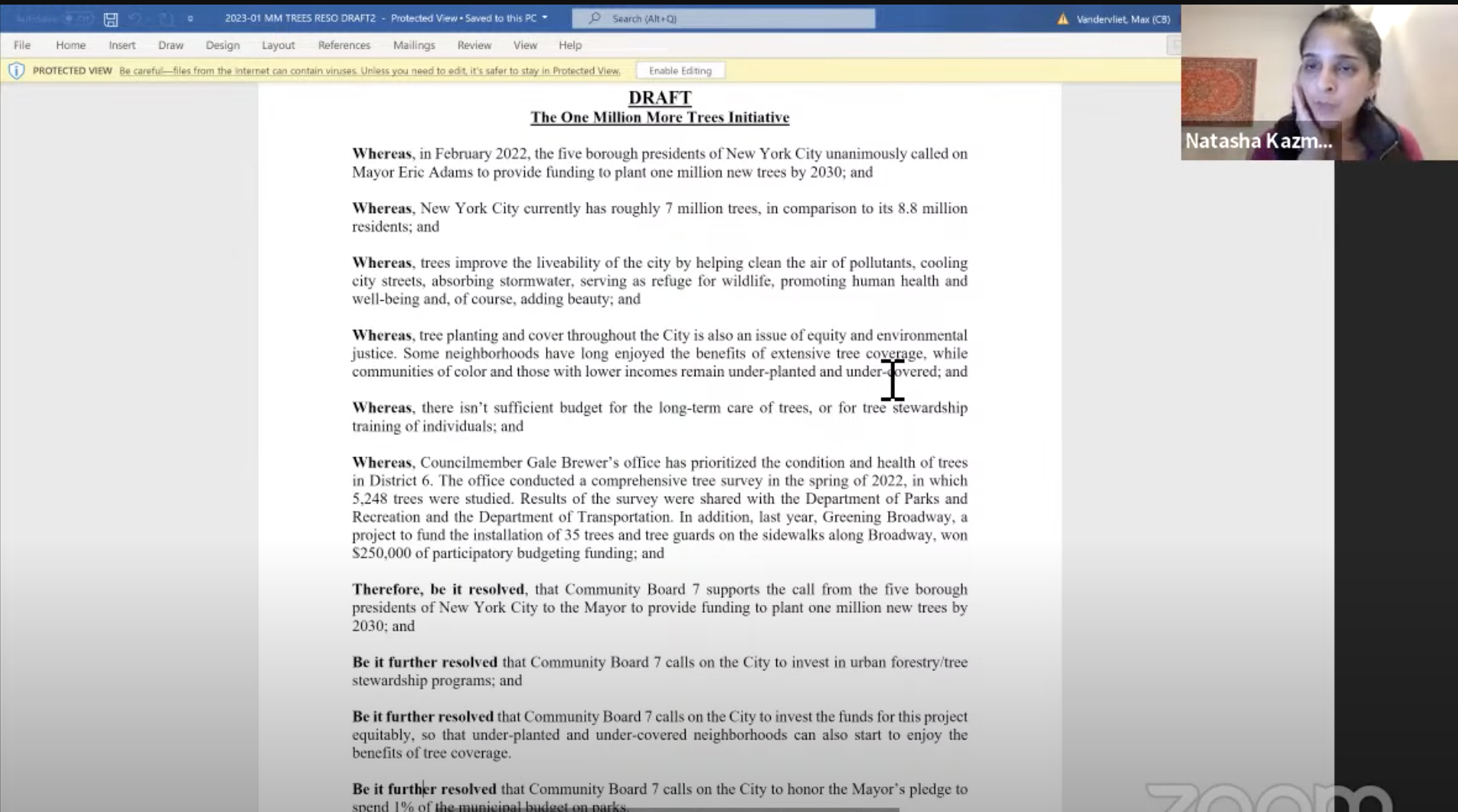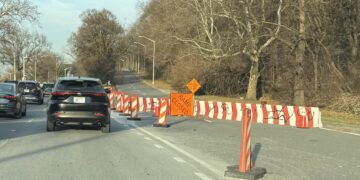
By Scott Etkin
On Monday night, when the Community Board 7 Parks & Environment Committee met over Zoom, before joining the Transportation Committee for a combined session, they discussed the Million More Trees initiative, a push from the five borough presidents for New York City to plant a million trees by 2030.
The committee members unanimously passed a resolution in favor of the initiative, but raised a few caveats. Calling the Upper West Side a “tree-rich” neighborhood, they emphasized the need for an equitable approach to planting that prioritizes areas with lower-income and minority residents — such as the South Bronx — which often have fewer trees. (The Parks Department’s recently published a tree map cataloging all the trees under their care, and counts 8,841 on the UWS.)
During the meeting, Peter Arndtsen of the Columbus/Amsterdam Business Improvement District (BID) said more than 25 sites have been identified around the Frederick Douglass Houses, the New York City Housing Authority (NYCHA) facilities on Columbus Avenue between 100th and 104th Streets, which could be filled with trees and tree guards.
Increasing the tree canopy in the city has been an area of focus, because trees are proven to improve air quality, reduce flooding during rainstorms, and lower the temperature on hot days, among other benefits. Million More Trees is a reprise of the Million Trees campaign, which started under Mayor Bloomberg in 2007, and concluded under Mayor de Blasio in 2015.
The committee’s draft resolution supporting the initiative, which was reviewed during the meeting, also calls on the City to invest in urban forestry and stewardship programs for the maintenance of the trees, as well as the caveat that this initiative not take away from other funding for NYC’s parks.
Funding may be a sticking point in the initiative. The Million More Trees proposal was estimated to cost just above $500 million. The cost per tree can vary, however, depending on where they’re planted, i.e. on the sidewalk or in a park. The Parks Department estimates that the average cost per street tree is $3,500, which includes “digging up a bed for the tree, the labor to complete the work and a guarantee from a contractor to either maintain the tree for two years or replace it, if necessary,” writes SI Live.
During his campaign for Mayor, Eric Adams pledged to allocate 1% of the City’s budget (or $1 billion) to its parks. This past April when the budget was set, funding was closer to $600 million. The 1% mark remains a long-term goal, according to the Adams administration.
Since the borough presidents launched the Million More Trees initiative in February 2022, a fraction of that number have been funded. The Mayor’s office has approved the Parks Department to plant 20,000 trees a year for the next four years, according to the City Council.
Last year, participatory budgeting on the UWS awarded $250,000 to install approximately 35 trees and tree guards on the sidewalks along Broadway.









I so support this. Trees keep us cool and calm.
I’d imagine that the UWSers would be willing to pay extra to get these trees planted.
20,000 trees x 4 years is only 80,000 trees. It’s a lot, but far from 1,000,000.
I’m so glad to see this but…
$3,500 per tree seems very high for a tree plus installation and two years maintenance?
Maybe the city should hire our California landscaper, he charges $250 for a large 24″ Box tree installed.
What is a large 24″ box tree? I could see measuring a tree by the size of the rootball or the diameter of the trunk or the height of the tree. I think diameter of the trunk is what is most often used.
3,500 per tree?
Are you kidding ?! Even with whatever minimal maintenance would be included this is outrageous. Is this really the best the city can do? Really……
If that $3,500 doesn’t include a guard of some kind, the trees are toast (and the cost is absurd). Not that a guard keeps every dog out, but if there’s nothing, the tree pit just becomes a compacted dog toilet and the tree eventually dies. The area around the Douglass Houses is particularly feces-strewn, too, so the guards are doubly necessary.
Agree. There are systemic issues there – you can’t just plant a tree and expect that will keep people from leaving dog poo and garbage everywhere. The pits will be a dog toilet and garbage dump.
The 1% goal is a pipe dream. Just something to mollify voters.